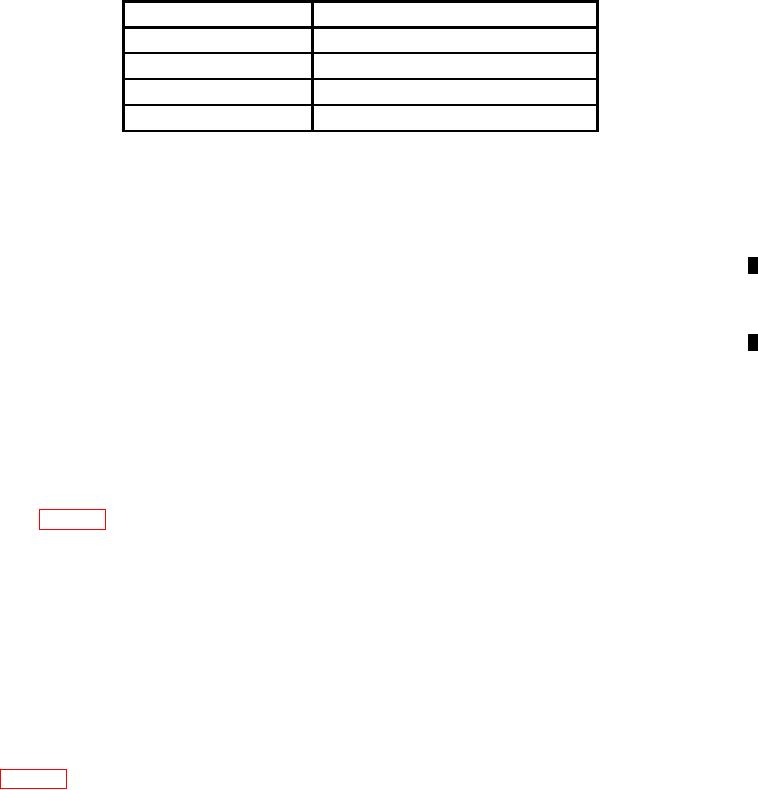
TM 1-1510-262-10
NOTE
To increase visibility and safety when operating in high-density trafic area, a climb speed of 160
KIAS to 10,000 feet MSL may be used.
Table 8-2.
Cruise Climb Schedule.
PRESSURE ALTITUDE
RECOMMENDED CLIMB AIRSPEED
SL to 10,000 FEET
135 KIAS
10,000 to 20,000 FEET
130 KIAS
20,000 to 25,000 FEET
125 KIAS
25,000 to 35,000 FEE
120 KIAS
NOTE
The maximum rate of climb performance is obtained by setting maximum continuous power and
maintaining two-engine climb speed.
1. Climb power -- Set
2. PROP SYNC -- As required.
# YD (yaw damper) -- ENGAGE (required above 17,000 feet).
$ BRAKE deice -- As required.
% ICE VANE CONTROL switches -- As required.
^ ENVIRO & PNEU BLEED AIR switches (#1 and #2 ) -- As required.
& Cabin pressurization -- Check. Adjust rate control knob so that cabin rate-of-climb equals one third of
aircraft rate-of-climb.
8. Wings and center section -- Check for security and no fuel/oil leaks.
( TCAS -- As required.
Zk Mission control panel switches -- Check and set as required.
8-29. CRUISE.
Refer to Chapter 7 for airspeed, power settings, and fuel low information. The following procedures are to be used
for cruise coniguration:
1. POWER -- Set.
2. Altimeters -- Check.
3. Engine instruments -- Check, note indications.
4. RECOG lights -- As required.
% ICE & RAIN switches -- As required.
^ AUTOFEATHER -- As required.
& Fuel consumption check -- Perform.
8-30. DESCENT.
Descent from cruise altitude should normally be made by letting down at cruise airspeed with reduced power. (Refer
to Chapter 7 for performance data.)
NOTE
Cabin altitude and rate-of-climb controller should be adjusted prior to starting descent.
If required to descend at a low airspeed (i.e., to conserve airspace or minimize turbulence), approach laps and
landing gear may be extended to increase the rate and angle of descent while maintaining the slower airspeed.
8-25
Change 2

